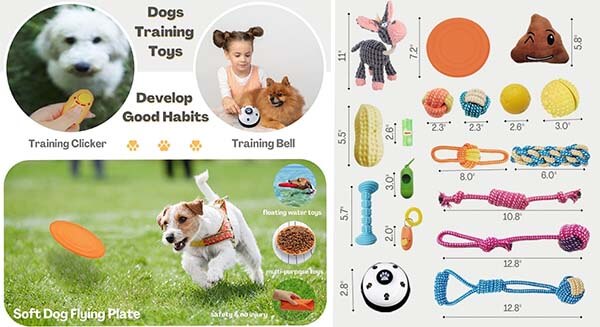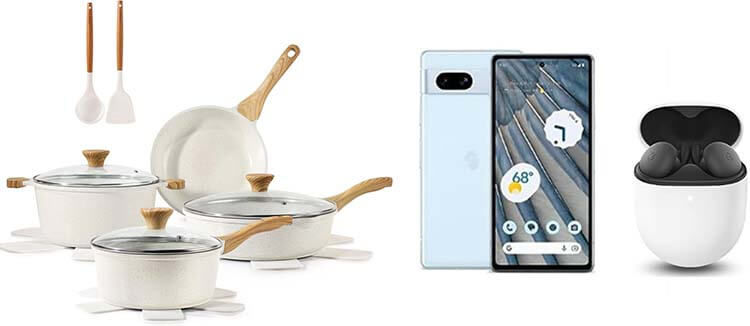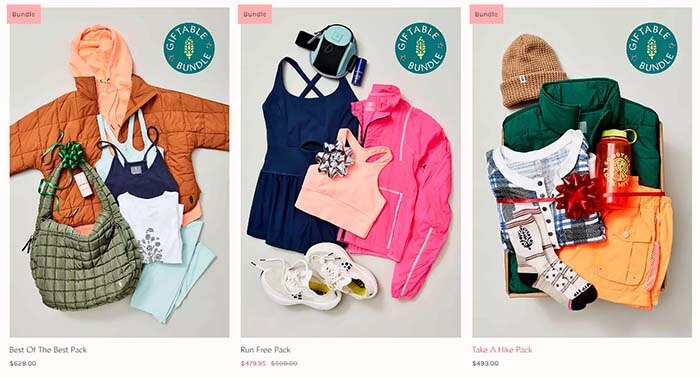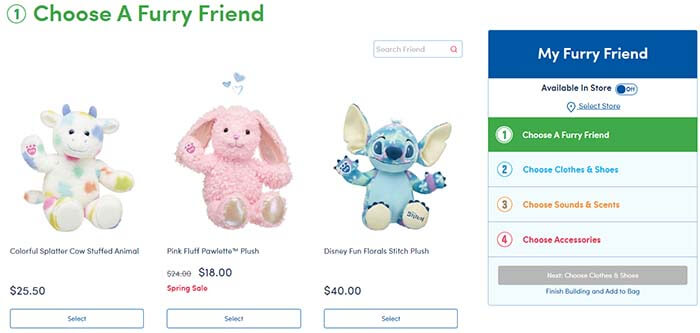90% of new sellers believe it’s enough if their products differ from the competition in looks, packaging, or features. Some even spend a lot of money developing new products to make them unique. However, both ways can lead you down the wrong path. Blindly developing new products is super risky, and anyone pushing you to do that is probably a cheater.
Actually, a lot of our new clients have managed to differentiate their products through one method: Bundling. It’s an effective strategy to make your product stand out at low costs. The key to this way lies not only in meeting the real needs of consumers but also in making them feel like they’ve got a bargain. Let me explain product bundling in detail in this post.
1. What is product bundling?
Product bundling is a sales strategy where sellers combine two or more products into a single package, often offering it at a discounted price compared to buying the items individually. Furthermore, the bundle items should be related or complementary, meaning they are designed to be used together.
2. What are the different types of product bundling?
There are 7 common types of product bundling in the market. We also share some bundling examples for your reference.
Mixed bundles
Mixed bundles refer to selling multiple, similar types of products in a pack. For example, our client sells dog supply sets on Amazon, which includes several rubber chew toys, rope toys, plush toys, training toys, and poop disposal tools. Right now, there’s no one on Amazon selling bundles exactly like hers. That’s because she selected all the product styles herself and had a designer customize the packaging box.
We helped the client source over a dozen products from various Chinese factories. Even though all the products were standard stock items, the process of purchasing and comparing took a really long time. This was because our agent had to compare numerous factories and create many prototypes from them, to ensure the products not only fit well in the box but also maintained consistent quality. In the end, we managed to match everything perfectly and package them all together.

Cross-sell bundles
Cross-sell bundles involve pairing a main product with one or more complementary items, which can also be sold individually.
For instance, a seller specializing in smartphones might offer a bundle that includes earbuds. Similarly, sellers of power banks often offer bundles packed with various charging cables. In the kitchen utensil industry, a bundle might consist of pans, spatulas, and spoons.

Gifting bundles
Gifting bundles consist of various products packaged together, allowing buyers to send them as gifts to others. These bundles are often designed around a theme, occasion, or the recipients’ interests.
Free People, a company that sells a wide range of products like clothing and accessories, offers several gift bundles on its website, particularly during holidays or for special occasions. For instance, there is a ‘Hike Gift Pack’ which includes six items: a jacket, a base layer, hiking pants, socks, a beanie, and a water bottle. Customers can purchase this bundle as a thoughtful gift for a friend who loves hiking.

Build-your-own bundles
It allows customers to choose the bundle items they prefer from a range of products to assemble a personalized bundle.
For example, Build-A-Bear Workshop is an American retailer known for its customized stuffed animals. Customers can personalize the bundle by selecting the animal, stuffing it, dressing it, and adding accessories.

It’s also commonly seen in fashion retail, where customers can pick different clothing items or accessories to form a set, or in food services, where customers can select components of a meal according to their taste preferences.
New product bundles
New product bundles combine newly launched items with existing popular products to spark interest and boost sales. This strategy helps new products gain exposure and acceptance more quickly by associating them with well-trusted items. For example, a beauty brand might bundle its staple products with trial-size versions of its latest launches.
Pure bundles
Pure bundling means that two or more products are sold exclusively within the bundle and not available for individual purchase. For example, a 4-piece bedding set often serves as a typical pure bundle. Such a set usually includes two pillowcases, a flat sheet, and a quilt cover, with none of these items available for separate purchase.
Buy-one-get-one bundles
Buy-one-get-one deals are those awesome promotions where you buy a product and get another one either for free or at a sweet discount. This strategy is commonly used to increase sales volume, clear out inventory, and attract customers by offering added value to their purchases.
3. What are the benefits of product bundling?
For sellers, product bundling helps to differentiate your products to improve the competition, as it’s hard for other sellers to replicate your bundles directly. Besides, this strategy can boost sales by encouraging customers to buy more items at once.
Moreover, it’s a good way to launch your new products by bundling them with your existing best-sellers. If you have inventory that doesn’t sell well, you can also bundle them with hot items to speed up sales and clear your warehouse space.
For buyers, purchasing product bundles can save costs, make it convenient to buy complementary products together, and even find new products they might not have considered.
4. Things you must know to improve your bundles
It’s worth mentioning that when deciding how to bundle your products, don’t just guess. Build your bundles based on what the market research tells you. Make sure to check out how your idea fits into the real world, including getting feedback from actual customers. If you bundle two products that don’t really go together, you might be the only buyer.
Also, the number of items in a bundle should match what people want, not just adding or removing items randomly. Take our client who sells cooking utensils bundles. After checking out the top sellers, which had 14 pieces, he decided to drop the unnecessary and less used ones, making a 12-piece set.
However, cutting down the number didn’t really reduce the cost. So, we asked our client whether his target customers prefer high quality or just acceptable quality. The cost mainly depends on the amount of silicone used. By using less, the spatulas get a bit thinner, which doesn’t affect their use but can significantly lower the cost. This way, the product price can be $8 cheaper than the best sellers. It’s clear that not everyone is after the highest quality; a lot prefer a decent quality at a lower price.

We'd like to hear from you,
Jingsourcing is a leading Chinese sourcing company that helps medium and small businesses import from China. If you want to make your unique product bundles, feel free to contact us at any time.

well how i can able to offer bundles like
Hi, thank you for your comment! Please provide us with more details by submitting an inquiry here.
You doing great job Mr Jing.